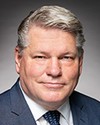The five GMAP markets that we're not negotiating with are Brunei, Burma, Madagascar, Kazakhstan, and Zambia. Again, the reason is that they're small markets, essentially, and there doesn't seem to be an interest to exploit the opportunities in those markets.
In terms of the plan for this year, we are looking at approaching a series of countries, mostly to expand our existing agreements. In some cases, we will meet with them. As Marc mentioned previously, often what triggers this process is that an airline, either the foreign carrier or the domestic carrier, comes to us and says they have an interest in expanding their commercial business in that market, and therefore, they've reached the ceiling of the current agreement and would like us to negotiate new services.
The plan for this year is that we're going to—




